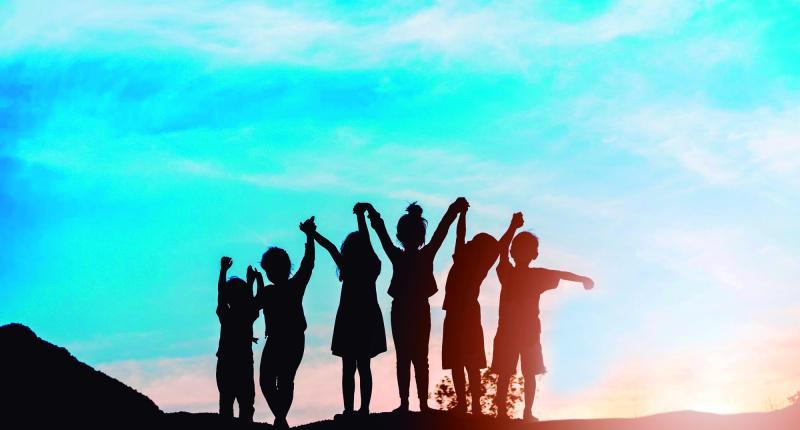Africa-Press – Cape verde. The country is on track in three of the Sustainable Development Goals (SDGs), with moderate improvement in seven, stagnant in three and no data in two. In short, there are still many challenges to overcome and only six years to achieve them.
Since 2016, the global edition of the Sustainable Development Report (SDR) has provided the most up-to-date data to assess and rank the performance of all UN member states on the Sustainable Development Goals – the 17 objectives to transform our world.
In this year’s index, the first 17 places are occupied by European countries – Japan, in 18th, ends this hegemony – in fact, in the first 50 places there are 38 European countries (and interestingly, Cuba, in 39th place, is ahead of the United States, in 46th).
Countries are ranked by their overall score [the overall score measures total progress towards achieving all 17 SDGs] and the score can be interpreted as a percentage of SDG achievement. A score of 100 indicates that all SDGs have been achieved. No country has achieved this score.
The Nordic countries occupy the podium: Finland leads (with 86.35 points), followed by Sweden (85.70) and Denmark (85.00). Cape Verde is the 88th country worldwide with 68.21 points (out of 167 countries with data analyzed) and the 6th at continental level – the first African country to appear in the ranking is Tunisia (60th with 72.53 points), followed by Morocco (69th/70.85), Algeria (71st/70.47), Mauritius (73rd/70.45) and Egypt (83rd/69.15).
CPLP in the SDG ranking
16th Portugal, 80.22 points
52nd Brazil, 73.78 points
88th Cape Verde, 68.21 points
118th Sao Tome, 63.01 points
148th Mozambique, 54.35 points
155th Angola, 51.93 points
156th Guinea-Bissau, 51.86 points Equatorial Guinea and East Timor have no points
Where we are better
At the end of the Cold War, when official development assistance agencies had their budgets cut – and countries that needed cooperation suffered the effects of dwindling resources – the UN and the Organisation for Economic Co-operation and Development (OECD) began to discuss goals for economic well-being, social development and sustainability.
The result was the publication of the document “Shaping the 21st Century: The Contribution of Development Cooperation” (in 1996), whose wording strengthened previous debates – such as that of Rio 92.
At the same time, the theory of development itself was discussed. One of the main references was the work of Nobel Prize winner in Economics Amartya Sen, one of the creators of the Human Development Index (HDI).
In September 2000, 189 nations signed a pledge to combat extreme poverty and other social problems. This pact led to the Millennium Development Goals (MDGs), eight objectives to be achieved by 2015, subdivided into 21 targets and 60 indicators.
The Sustainable Development Goals – more comprehensive and detailed than the MDGs – are a global agenda adopted during the United Nations Summit on Sustainable Development in September 2015, consisting of 17 goals and 169 targets to be achieved by 2030.
Each country has a profile in the SDR, where what has been done and what remains to be done in each of the 17 SDGs is analyzed.
According to this data, Cabo Verde is on track to achieve SDGs 1 (no poverty), 11 (sustainable cities and communities) and 17 (partnerships for the implementation of the goals). However, this does not mean that everything is fine.
For example, in SDG 1, while the eradication of extreme poverty was considered achieved, the challenge in combating poverty remains. In SDG 11, the challenge in air pollution and access to drinking water remains, while in the proportion of people living in slums and the percentage with access to public transport there were no assessments due to lack of data.
Where we need to improve
The SDGs were created to engage and raise awareness among key actors in society about their role and the efforts required to ensure the successful implementation of the 2030 Agenda in the country. It is important that the understanding of the SDGs transcends the concept of mere aspirations and good intentions, so that the complexity of this agenda is the subject of dialogue and joint efforts, and that the objectives and principles that underpin them are rooted in the general actions and conduct of all these actors.
According to the SDR, Cabo Verde has made moderate improvements in SDG number 3 (quality of health – which despite having achieved the objectives in targets such as the maternal mortality rate, the newborn mortality rate and the mortality rate of children under 5 years of age; it still has challenges such as new HIV infections, age-standardized mortality rate due to cardiovascular diseases, cancer, diabetes or chronic respiratory diseases in adults aged 30 to 70 [and the numbers are getting worse], number of deaths and illnesses from hazardous chemicals, contamination and pollution of air and water from the soil and life expectancy at birth [numbers have also gotten worse and are considered a major challenge].
Moderate improvements also in SDG 5 (gender equality – where family planning is still a challenge), in SDG 6 (clean water and sanitation – where the main challenges are: the percentage of the population using at least a basic drinking water service, the ratio of total freshwater withdrawals by all major sectors to total renewable freshwater resources and the proportion of wastewater that undergoes at least primary treatment multiplied by the proportion of the population connected to a wastewater collection system), in SDG 7 (affordable and renewable energy – where the share of renewable energy in total final energy consumption is a major challenge and is a target where scores are decreasing), in SDG 9 (industry, innovation and infrastructure – where there are significant challenges such as articles published in academic journals and spending on research and development), in SDG 15 (protecting life on land – where the major challenge is the average percentage of key areas for terrestrial biodiversity that are protected) and in SDG 16 (peace, justice and effective institutions – which has as major challenges: the number of intentional homicides per 100,000 people, the percentage of the population incarcerated but not convicted, [people detained in prisons, penal institutions or correctional institutions who have not been tried, are under trial or are awaiting a first instance decision on their case by a competent authority regarding their conviction or acquittal] and the percentage of children under five years of age registered).
Where are we worse?
The 2030 Agenda for Sustainable Development, which officially came into force in 2016, sets out the priorities and aspirations for global sustainable development by 2030 and seeks to mobilize global efforts around a set of common goals and targets.
The SDGs represent a unique and necessary opportunity to support sustainable, regenerative and inclusive growth, without which it will be impossible to address the climate emergency, the galloping loss of biodiversity and social inequalities and asymmetries. They are considered to have the capacity to unleash innovation, economic growth and development on an unprecedented scale.
Cabo Verde has stagnated in three SDGs; number 4 (quality education – with results worsening in targets such as the percentage of school-age children enrolled in primary education and the secondary school completion rate. Both targets are considered major challenges).
The country has also stopped its progress on SDG 13 (climate action) and SDG 14 (protecting marine life – which has as major challenges the average percentage of key areas for Marine Biodiversity that are protected, the extent to which marine waters under national jurisdiction have been contaminated by chemicals, excessive nutrients, human pathogens and litter and the percentage of fish that are caught and subsequently discarded).
Regarding SDGs 8 (decent work and economic growth) and 12 (sustainable production and consumption), the report says it did not have access to information.
The data in 2024
According to the SDR, on average, only 16% of SDG targets are on track to be met globally by 2030, with the remaining 84% showing limited progress or a reversal of progress. Globally, progress on the SDGs has stalled since 2020, and the five SDG targets on which the largest proportion of countries have shown a setback since 2015 are: obesity rate (SDG 2), press freedom (SDG 16), Red List Index (SDG 15), sustainable nitrogen management (SDG 2) and life expectancy at birth (SDG 3).
The pace of SDG progress varies significantly across country groups. Since 2015, average SDG development in BRICS (Brazil, Russian Federation, India, China and South Africa) and BRICS+ (Egypt, Ethiopia, Iran, Saudi Arabia and United Arab Emirates) countries has outpaced the global average, while East and South Asia have emerged as the regions making the most progress towards the SDGs. In contrast, the gap between the global average SDG performance and that of the poorest and most vulnerable countries, including Small Island Developing States, has widened since 2015.
Sustainable development remains a long-term investment challenge. Reforming the global financial architecture is more urgent than ever. Low-income and lower-middle-income countries urgently need access to affordable long-term capital so they can invest at scale to achieve sustainable development goals.
SDG targets related to food and land systems are particularly off track. Globally, 600 million people will suffer from hunger by 2030; obesity is on the rise; and greenhouse gas emissions from agriculture, forestry and other land uses account for almost a quarter of total annual global emissions.
These sustainable development goals, adopted by the 193 countries of the United Nations, have the ambition of “leaving no one behind”, establish a common language for all stakeholders, set sustainability targets – focusing on critical areas for humanity – and are structured around 5 Principles: Planet, People, Prosperity, Peace and Partnerships.
For More News And Analysis About Cape verde Follow Africa-Press






